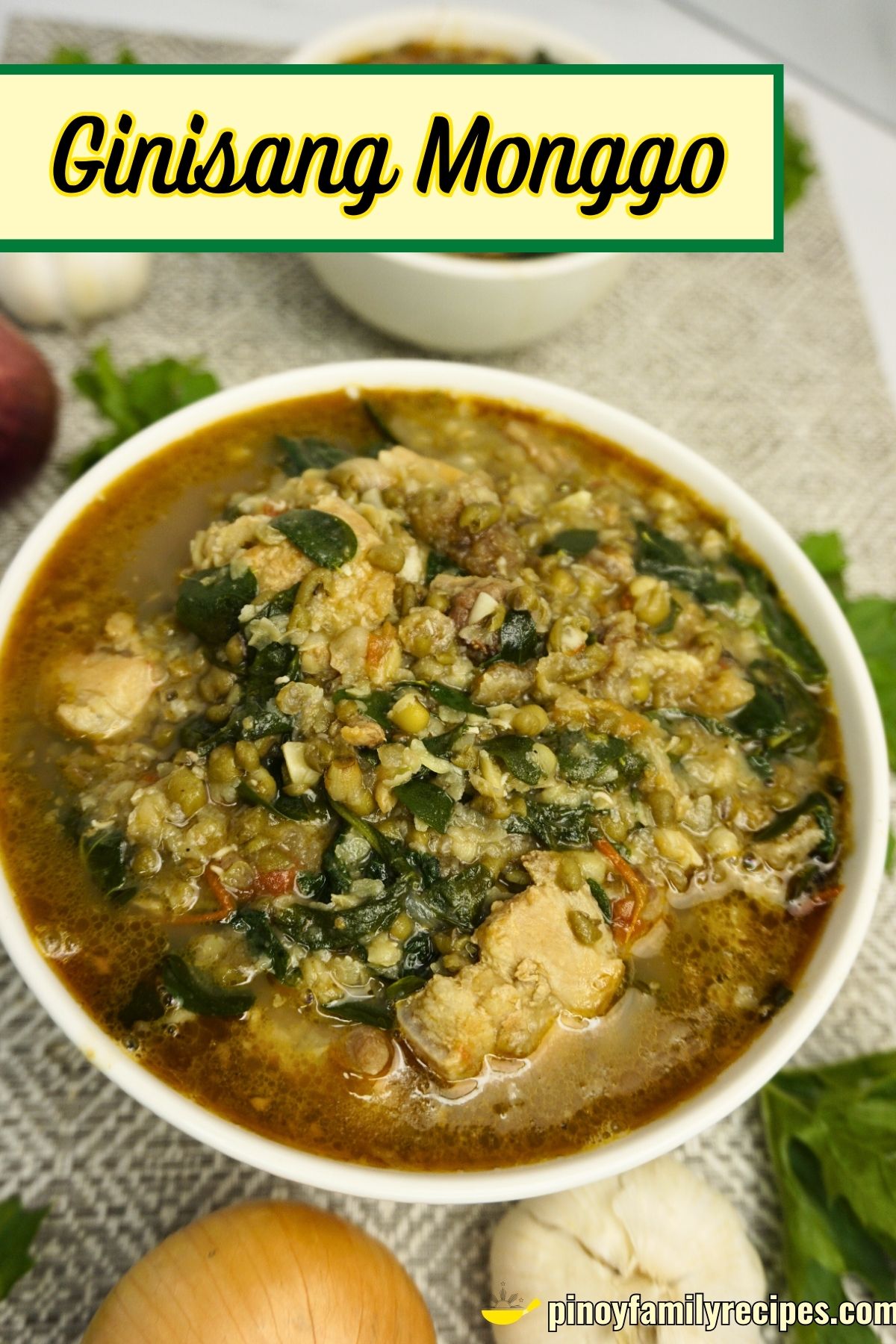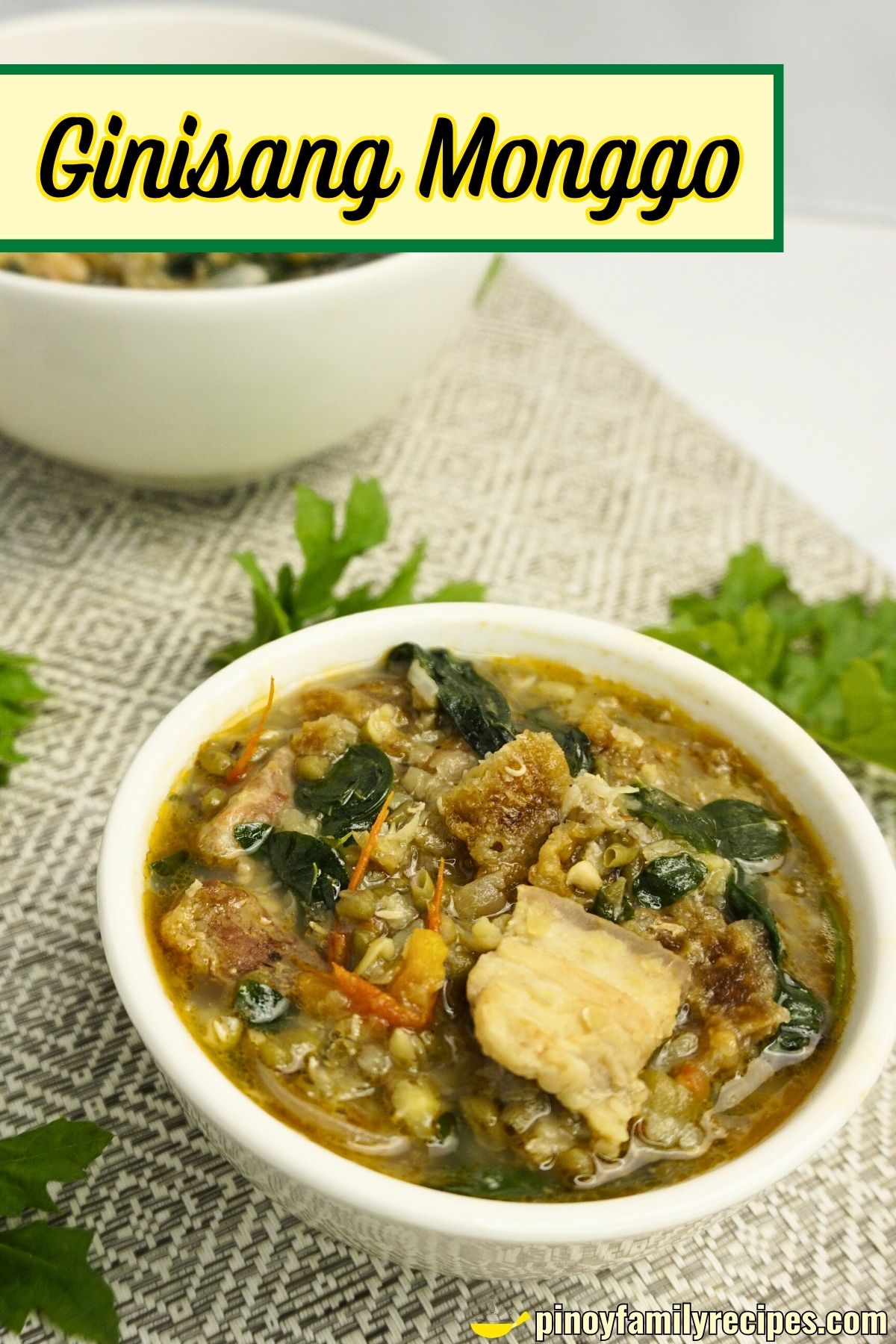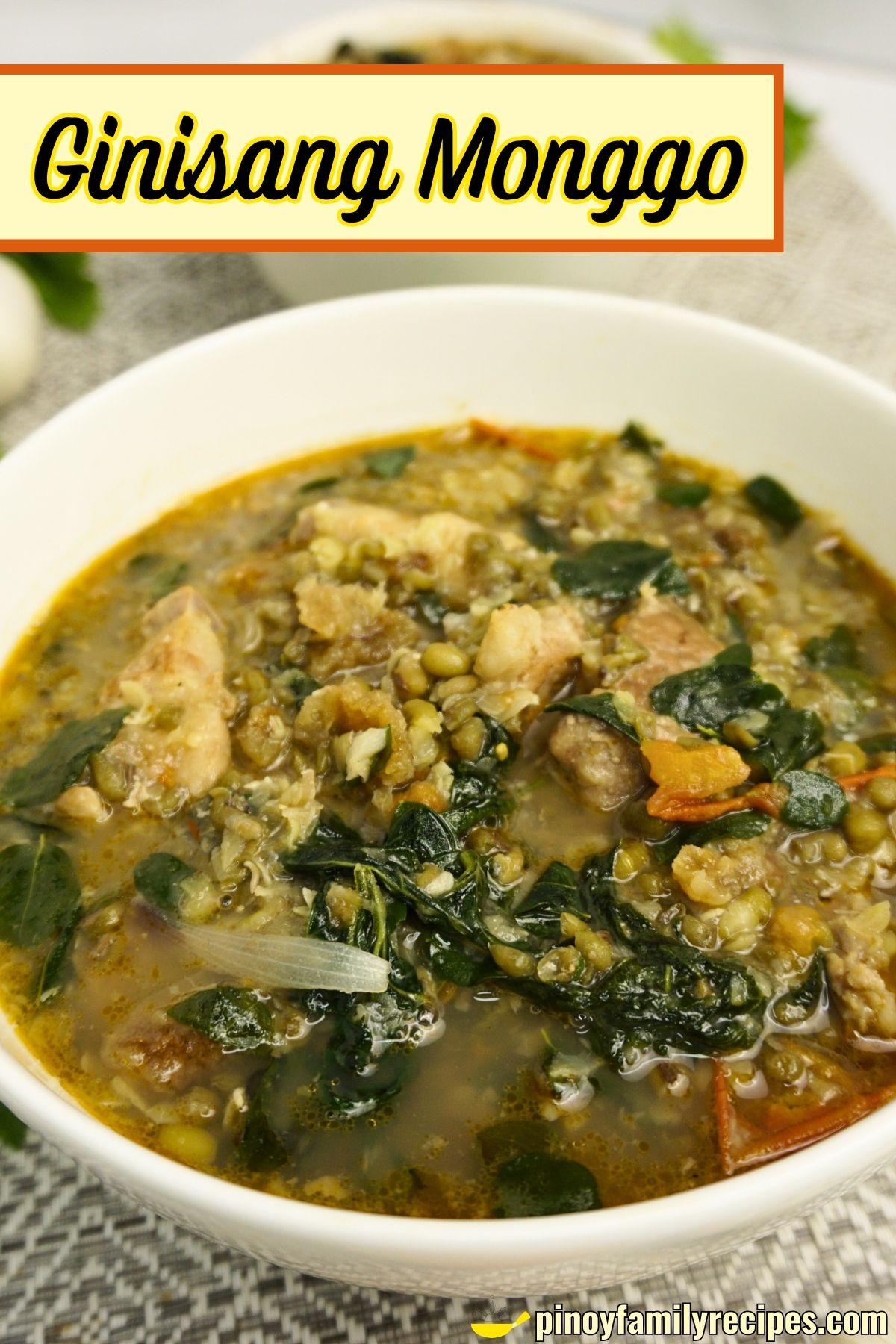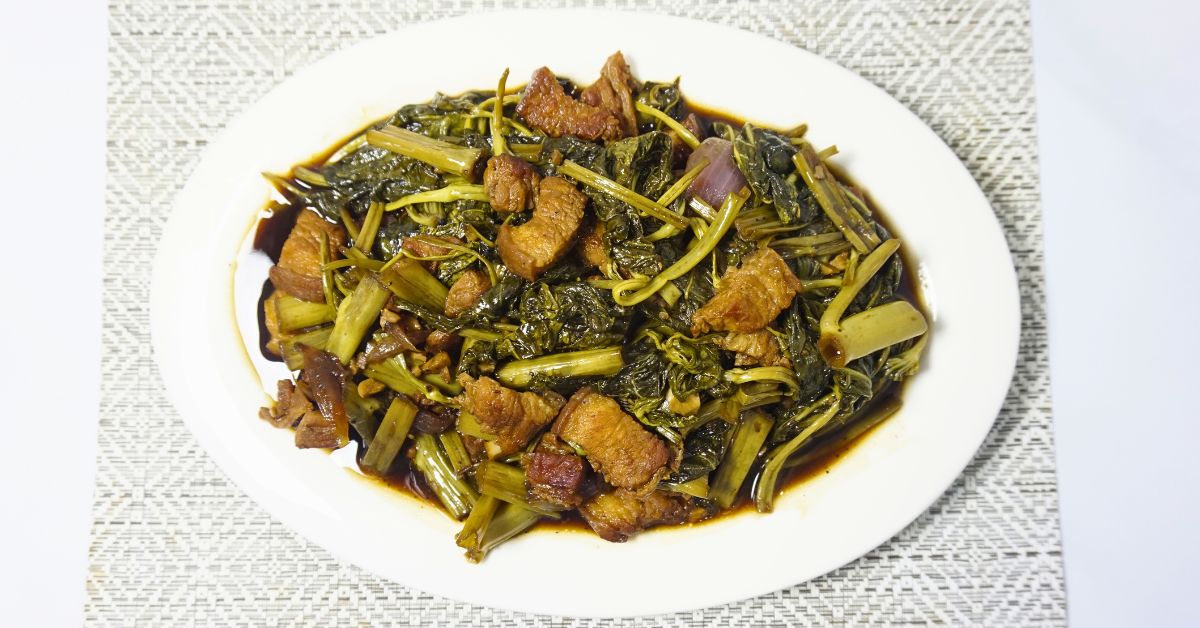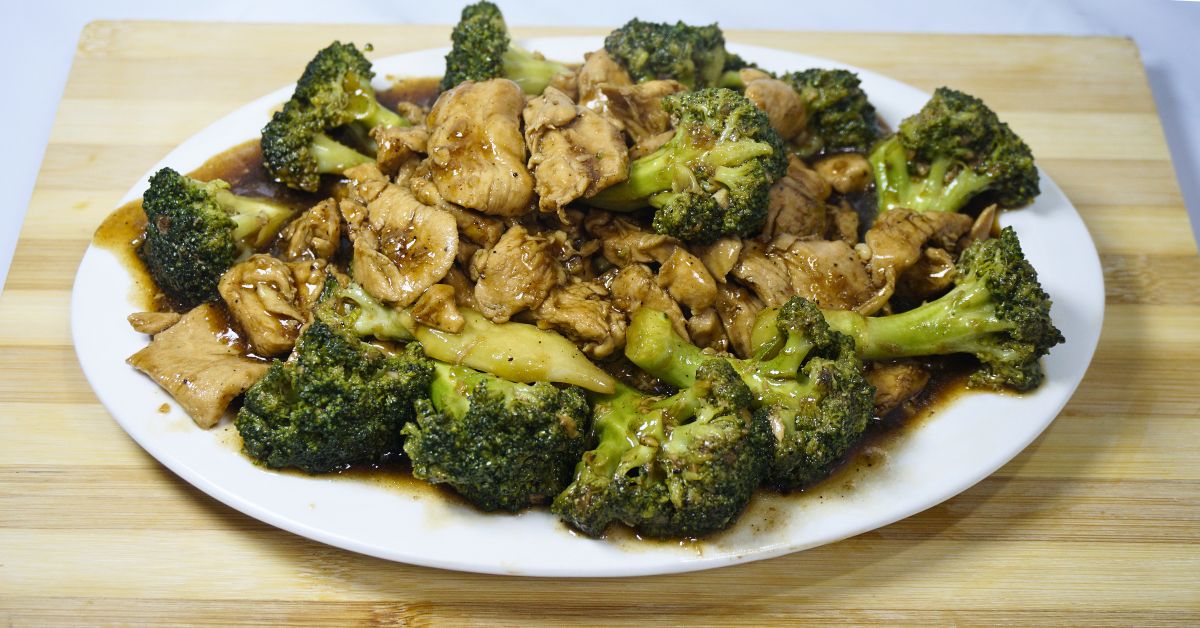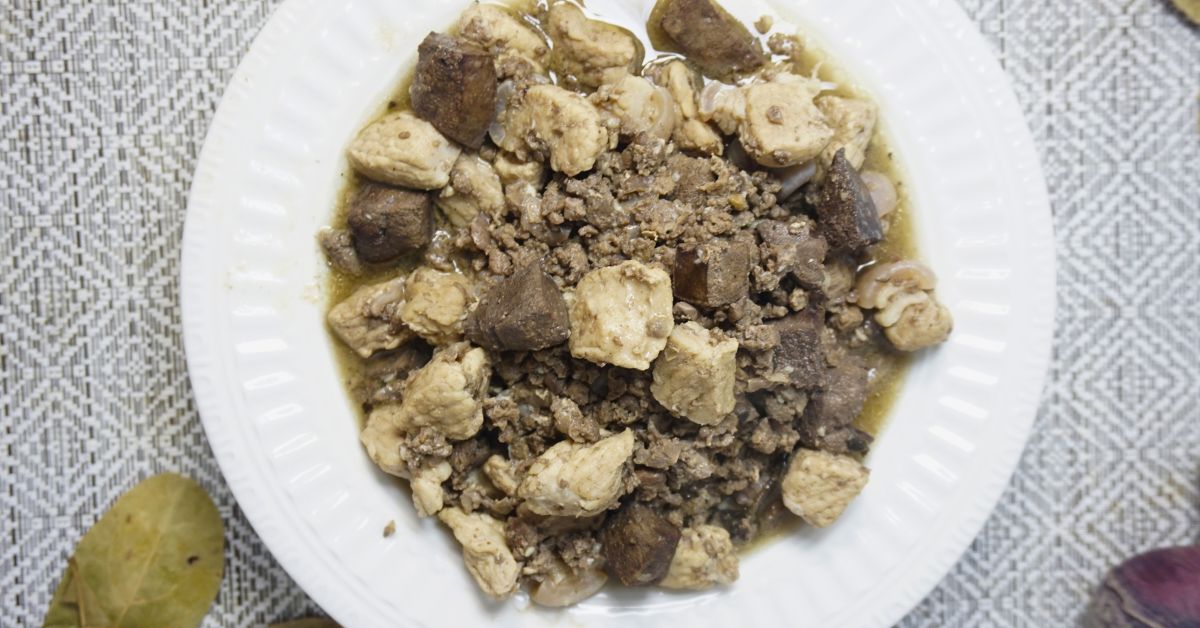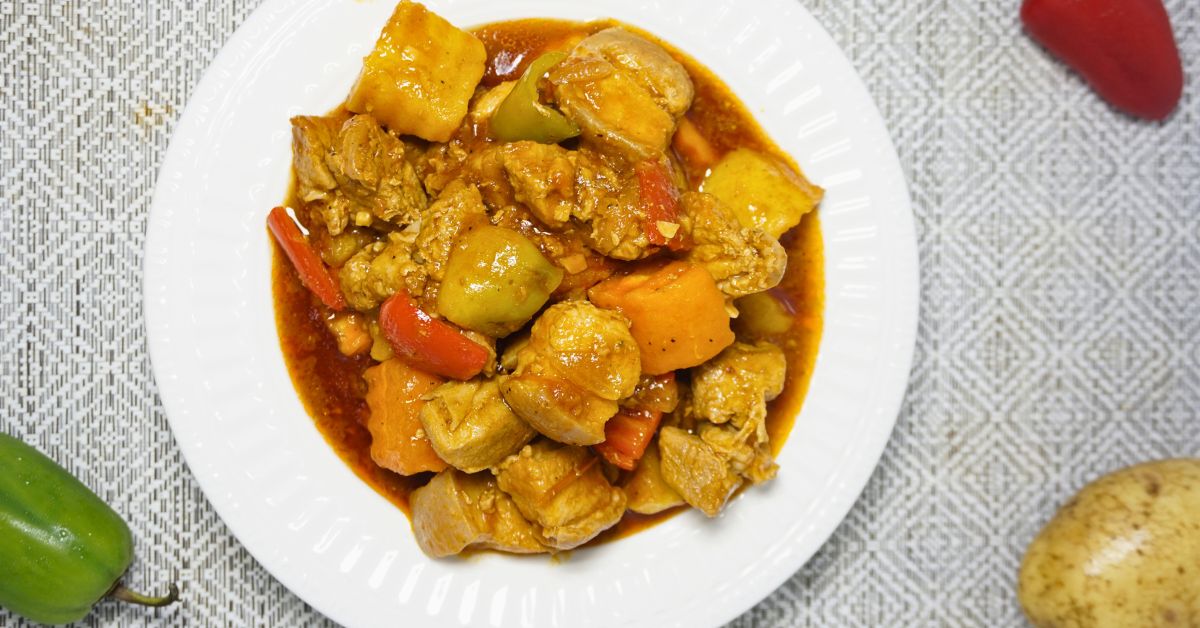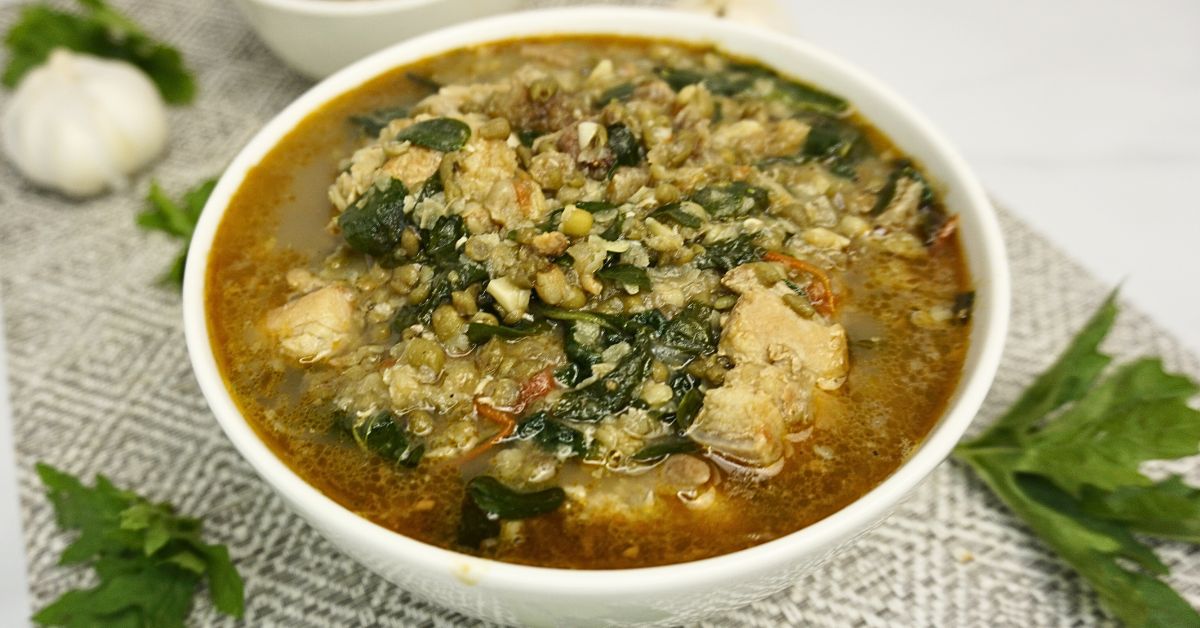
Almost every Filipino knows that ginisang monggo is our Friday National Dish! If you ask me why, I don’t know either! But one thing’s for sure, it’s a favorite in many homes. It’s simple, comforting, and perfect for sharing with family.
Every Friday, the smell of ginisang monggo fills Filipino homes, reminding us of family meals and cozy evenings. This dish is not just about food; it’s about tradition and being together. Ginisang monggo is healthy too, packed with nutrients.
What makes ginisang monggo special is you can make it in many ways. You can cook it plain, with pork, shrimp, or even without meat.
Today, I’ll share my favorite version: ginisang monggo with pork. The tender pork makes the dish even tastier.
Imagine sitting down with a bowl of warm ginisang monggo, topped with chicharon and fresh malunggay leaves. Pair it with rice and some fried fish, and you’ve got a meal that will make everyone happy.
Ready to cook? Let’s get started!
Here’s how to make ginisang monggo with pork. It’s easy and quick, perfect for a busy day.
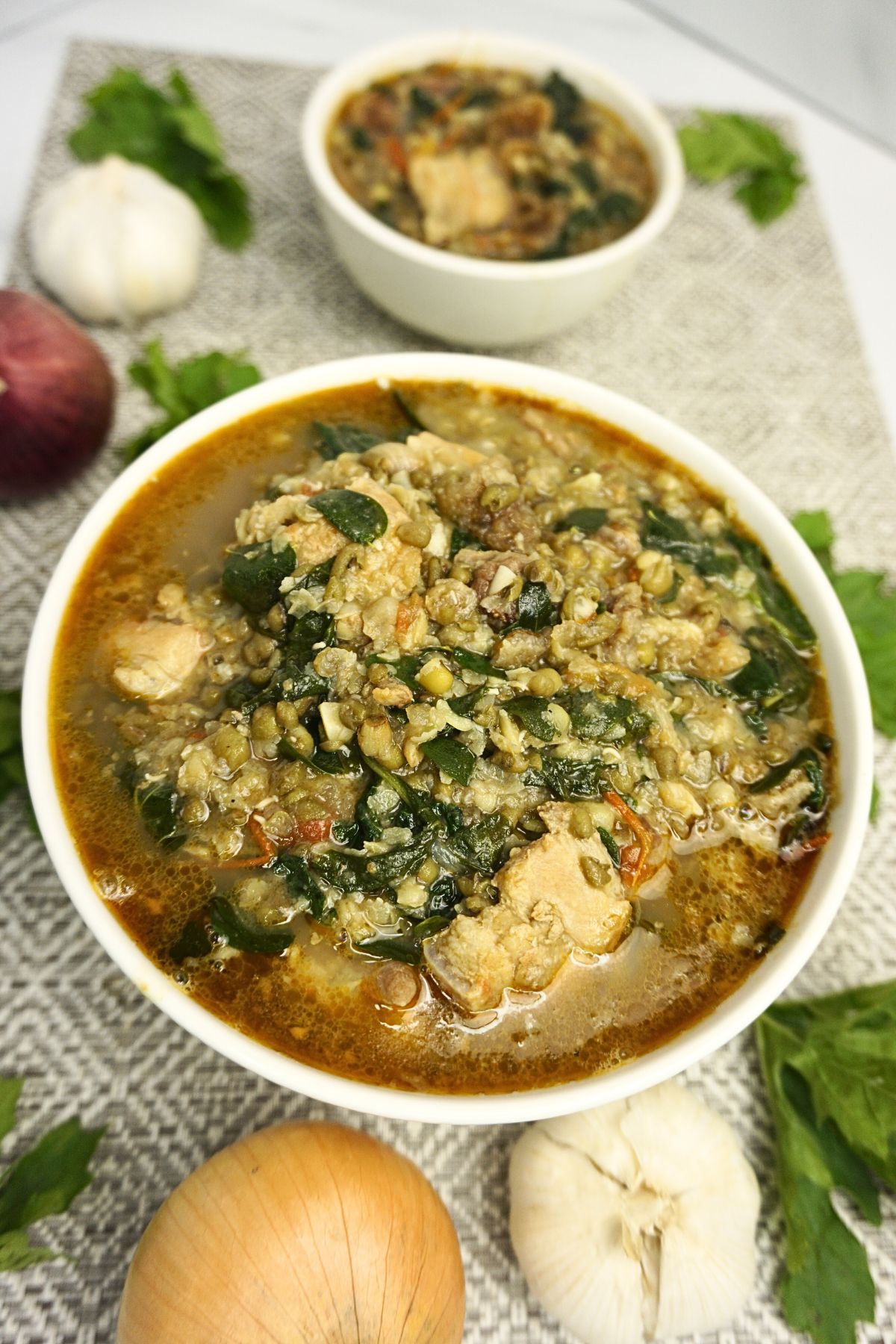
Why You’ll Love Ginisang Monggo
Let me tell you why ginisang monggo is one of my all-time favorites. I remember growing up, Fridays were always special because of this dish. The smell of sautéed garlic, onions, and monggo beans would fill our house, making everyone’s mouth water.
Easy to Make: Trust me, you don’t have to be a chef to whip this up. It’s so simple that even if you’re just starting to cook, you’ll nail it.
Healthy and Nutritious: I love how monggo beans are packed with nutrients. They’re a great source of protein, fiber, and vitamins. Adding pork just makes it even more satisfying and delicious.
Comforting and Delicious: There’s something about a warm bowl of ginisang monggo that feels like a hug. After a long day, it’s the perfect comfort food to help you unwind.
Affordable: One of the best things about this dish is that it’s budget-friendly. You don’t need to spend a lot to make a meal that tastes this good.
Versatile: You can get creative with it! Sometimes, I add shrimp or make it vegetarian with just veggies. You can tweak it to suit your taste.
Great for Leftovers: Ginisang monggo tastes even better the next day. I usually make a big pot so we can enjoy it for a couple of days.
Give ginisang monggo a try. It’s a dish that brings warmth, comfort, and deliciousness to your table, and I’m sure it’ll become a favorite in your home just like it is in mine.

Ginisang Monggo with Pork Ingredients
- Mung Beans (Monggo): These small green beans are the star of the dish, providing a hearty and nutritious base. They become tender and flavorful when cooked, soaking up the delicious broth.
- Pork Belly or Pork Shoulder (optional): Adding pork gives the dish a rich and savory taste. The meat becomes tender and juicy, making each bite satisfying.
- Garlic, Onion, and Tomatoes: These aromatics are the foundation of the dish, providing depth and sweetness. They create a flavorful base that enhances the taste of the mung beans and pork.
- Fish Sauce (patis): Adds a salty and umami flavor that compliments the other ingredients. It’s a key seasoning that brings everything together.
- Pork Cube (optional): This adds an extra layer of savory depth to the broth. It enhances the meaty flavor of the dish.
- Ampalaya Leaves, Chili Leaves (dahon ng sili), and Malunggay Leaves (all optional): These greens add a fresh and slightly bitter taste that balances the richness of the pork and mung beans. They also boost the dish’s nutritional value.
- Chicharon Baboy (optional): Crispy pork cracklings add a delightful crunch and an extra burst of flavor. They make the dish more indulgent and fun to eat.
- Salt and Pepper: Basic seasonings that enhance all the other flavors. Adjust to taste to perfect the dish.
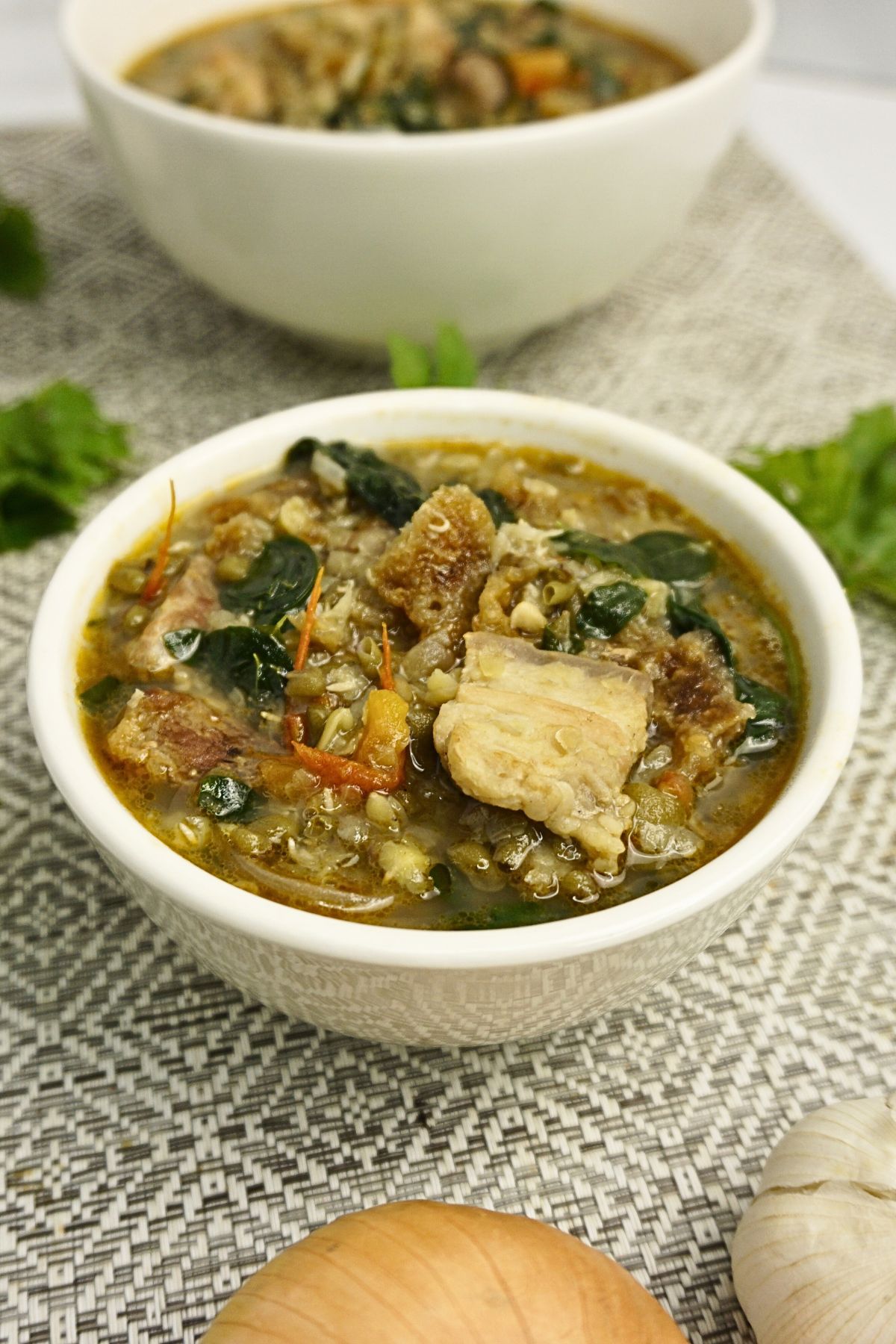
How To Cook Ginisang Monggo with Pork
Prep the Mung Beans
First, rinse the mung beans under cold water to remove any debris. Then, soak them in water for at least 1 hour or overnight. This step helps them cook faster.
Cook the Mung Beans
In a large pot, combine the soaked mung beans and 4 cups of water. Bring it to a boil over medium-high heat. Once boiling, reduce the heat to medium-low and let it simmer for about 30-40 minutes, or until the mung beans are tender and starting to break apart. If needed, add more water to reach your desired consistency. Once cooked, mash the mung beans to create a creamy texture, then set aside.
Cook the Pork
In a separate pan, heat the cooking oil over medium heat. Add the pork pieces and cook until they are browned and cooked through. Once done, remove the pork from the pan and set it aside.
Sauté the Aromatics
In the same pan, add more oil if needed. Add the minced garlic and sauté until it becomes fragrant. Then, add the chopped onion and sauté until it becomes translucent. After that, add the chopped tomatoes and cook until they soften and release their juices.
Add Back the Pork and Mung Beans
Return the cooked pork to the pan. Add the mung beans to the pan. Once the mixture is slightly boiling, add pork cubes and fish sauce.
Combine and Cook the Vegetables
Add the ampalaya leaves, chili leaves (if using), and malunggay leaves to the pan. Cook until the leaves are wilted and tender.
Mix Everything Together
Combine the cooked mung beans and pork with the sautéed aromatics and vegetables in the pan. Stir well to mix all the flavors together. If you’re using chicharon, crush and add them in the last 5 minutes of cooking for a delicious crunch.
Season and Serve
Taste the dish and season with salt and pepper as needed. Serve your ginisang monggo hot with steamed rice. Enjoy this hearty and comforting dish with your family!
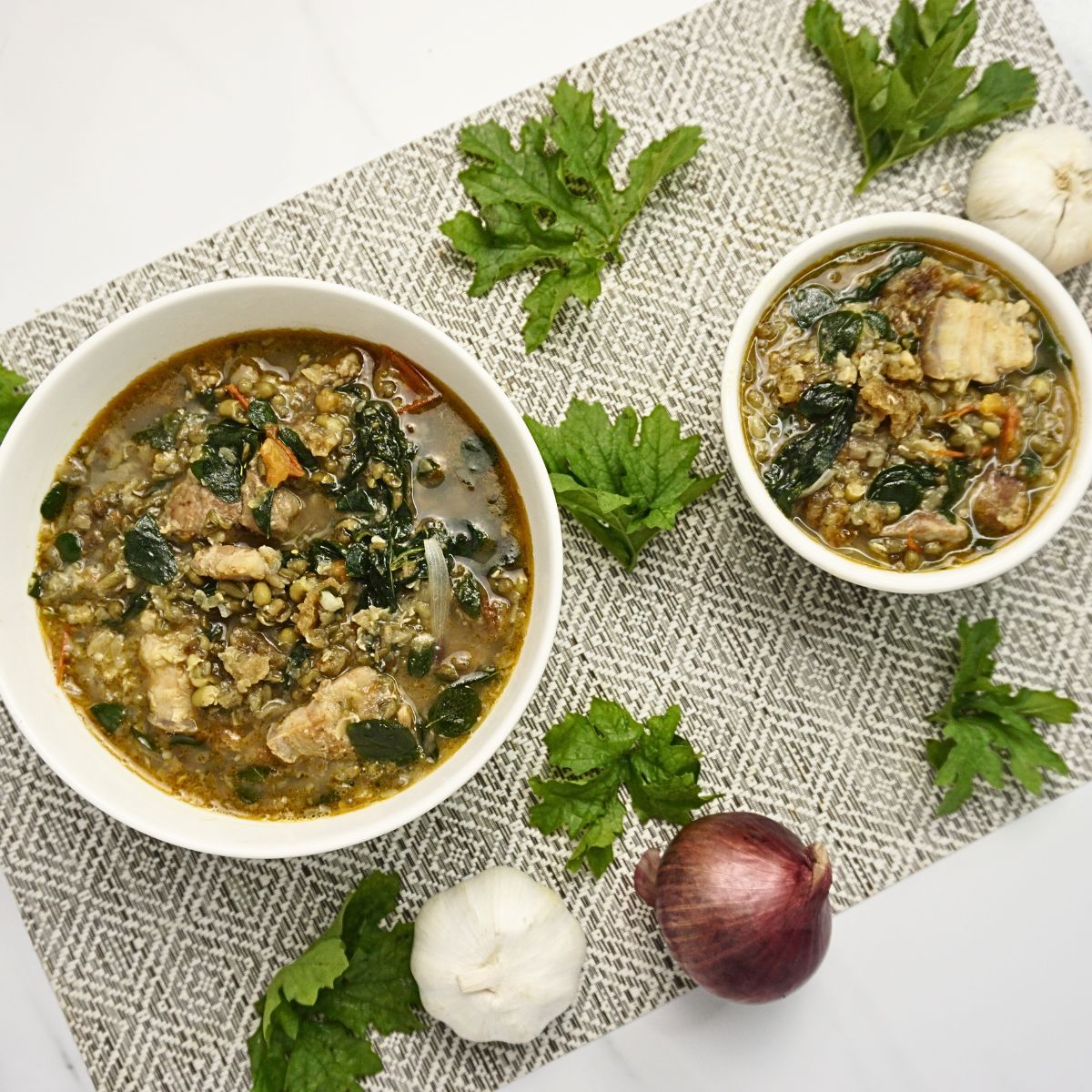
Other Meat to Use Instead of Pork
If you’re looking to switch things up or prefer other types of meat, here are some great alternatives to use in your ginisang monggo:
Chicken
Chicken is a lean and versatile option. You can use chicken breast or thighs, cut into bite-sized pieces. It cooks quickly and adds a nice, mild flavor that pairs well with the mung beans.
Beef
For a heartier version, try using beef. Thinly sliced beef strips or ground beef work well. Just make sure to cook it thoroughly and allow it to simmer a bit longer to become tender.
Shrimp
Shrimp adds a delicious seafood twist to ginisang monggo. It cooks very quickly, so add it towards the end of the cooking process. It gives the dish a slightly sweet and briny flavor.
Fish
Flaky fish like tilapia or bangus (milkfish) can be a great addition. Cook the fish separately and then add it to the mung beans. This adds a light and healthy option to the dish.
Frequently Asked Questions
Absolutely, you can substitute with spinach, kale, or any other leafy greens you prefer.
Store leftovers in an airtight container in the refrigerator for up to 3 days, and reheat on the stove or microwave.
Yes, you can add some spice to ginisang monggo by including sliced chili peppers or a dash of chili flakes. Adjust the amount according to your heat preference.
The consistency of ginisang monggo can be adjusted by controlling the amount of water or broth used. If it’s too thick, add more liquid. If it’s too thin, let it simmer uncovered for a while to reduce the liquid.

Ginisang Monggo Recipe with Pork
Ingredients
- 1 cup Monggo / Mung Beans
- 4 cups Water
- 2 tbsp Cooking Oil
- 250 grams Pork Belly / Pork Shoulders cut into bite-sized pieces (optional)
- 8 cloves Garlic (minced)
- 1 piece Onion medium (chopped)
- 2 piece Tomato medium (chopped)
- 2 tbsp Fish Sauce
- 1 piece Pork Cube (optional)
- 1 cup Ampalaya Leaves (optional)
- 1 cup Chili Leaves / Dahon ng Sili (optional)
- 1 cup Malunggay Leaves (optional)
- 1 cup Chicharon Baboy (optional)
- Salt and Pepper (to taste)
Instructions
- Rinse the mung beans under cold water and remove any debris. Soak the mung beans in water for at least 1 hour or overnight. This will help them cook faster.
- In a large pot, combine the mung beans and 4 cups of water. Bring to a boil over medium-high heat. Reduce the heat to medium-low and simmer for about 30-40 minutes, or until the mung beans are tender and starting to break apart. You can add more water if needed to reach your desired consistency. Once cooked, mash the mung beans to create a creamy texture, then set aside.
- In a separate pan, heat the cooking oil over medium heat. Add the pork pieces and cook until they are browned and cooked through. Remove from the pan and set aside.
- In the same pan, add more oil if needed. Add the minced garlic and sauté until fragrant. Saute the chopped onion until it becomes translucent. Add the chopped tomatoes and cook until they soften and release their juices
- Return the cooked pork to the pan. Add the mung beans to the pan. Once the mixture is slightly boiling, add pork cubes and fish sauce.
- Add the ampalaya leaves, chili leaves (if using) and malunggay leaves. Cook until wilted.
- If using chicharon, crush and add them in the last 5 minutes of cooking.
- Taste and season with salt and pepper as needed. Serve hot with steamed rice.Enjoy your Ginisang Monggo! This dish is hearty and nutritious, perfect for a comforting meal. Adjust the ingredients and seasoning according to your preference.
Video
Notes
- Use chicken or pork broth instead of water to add depth to the flavor of the dish.
- Some versions include shrimp or tinapa (smoked fish) for additional flavor complexity.
- Experiment with different vegetables like bitter melon for variation.
